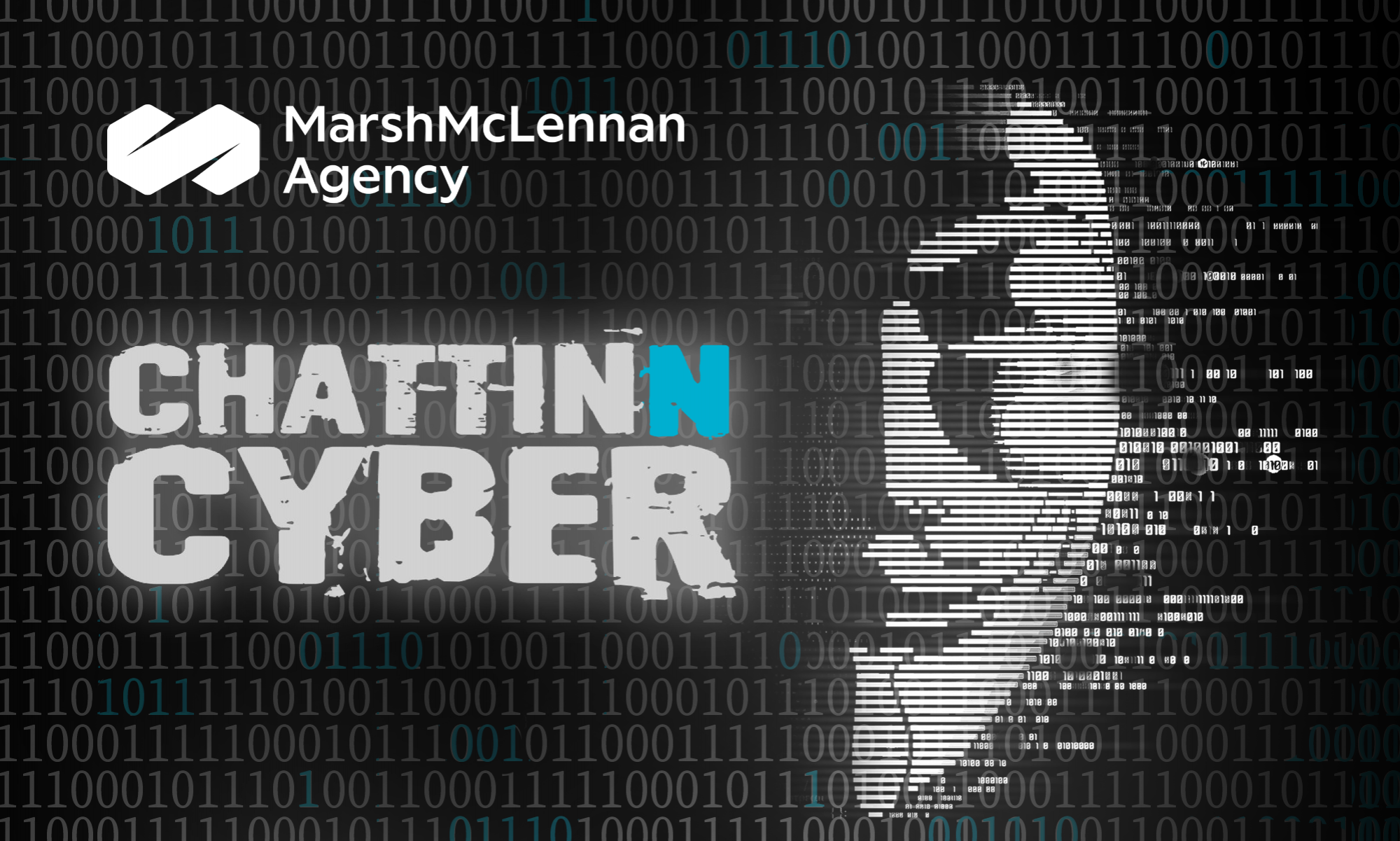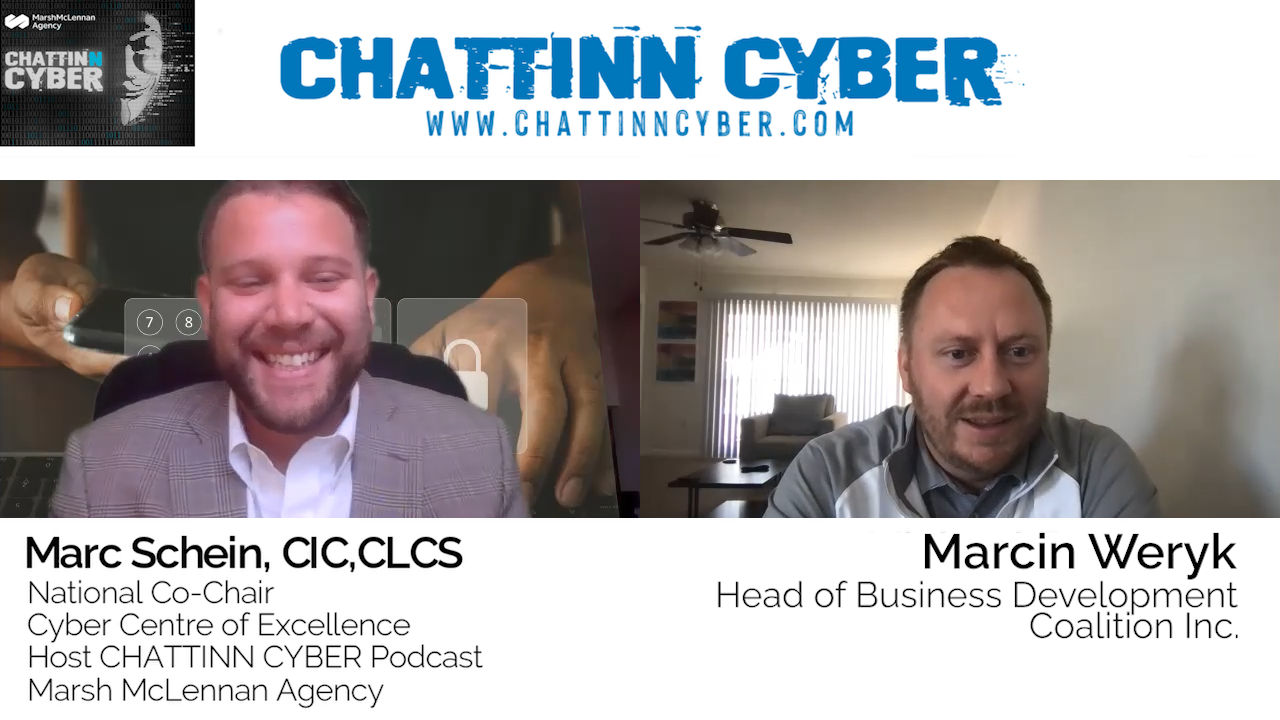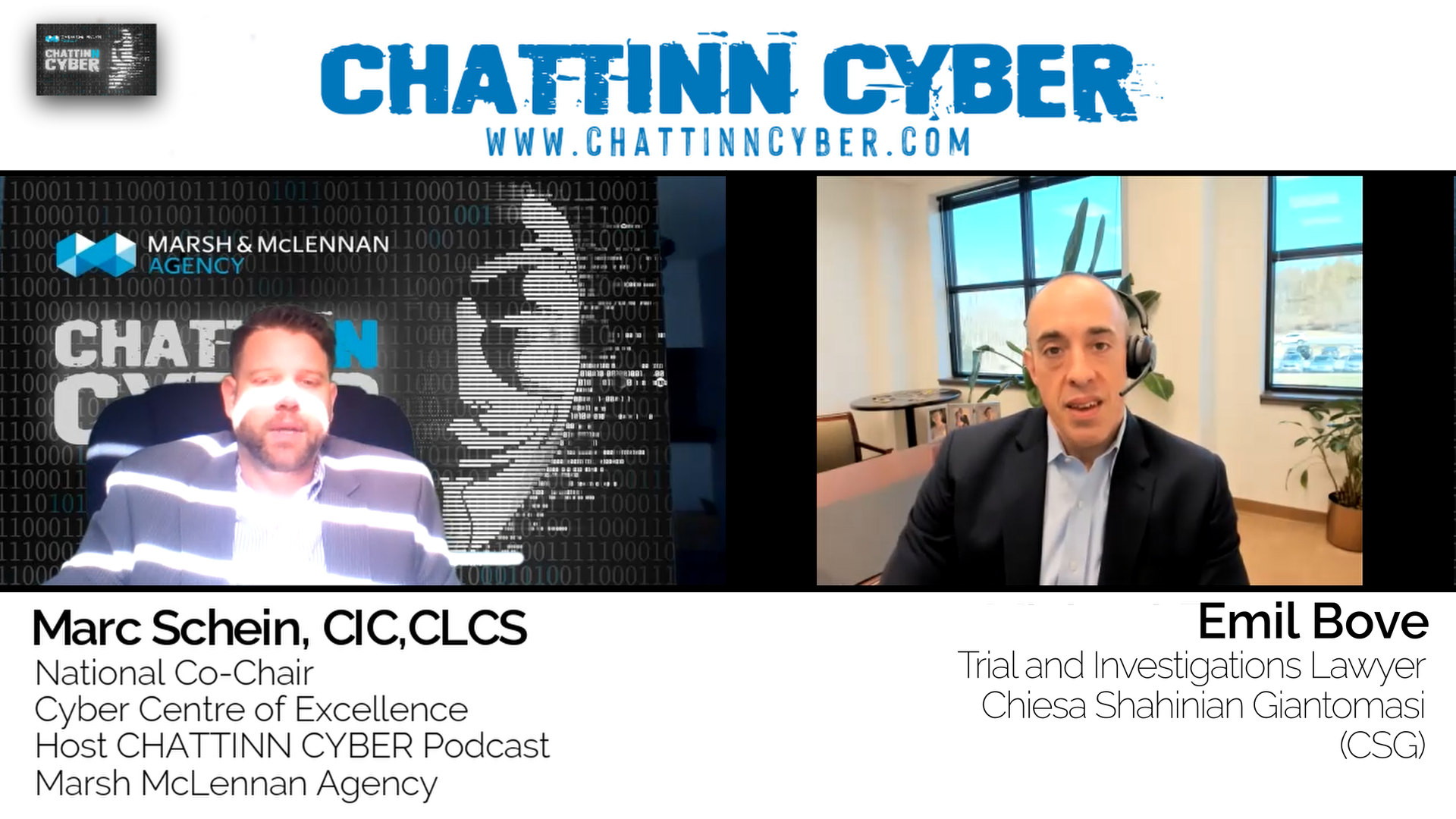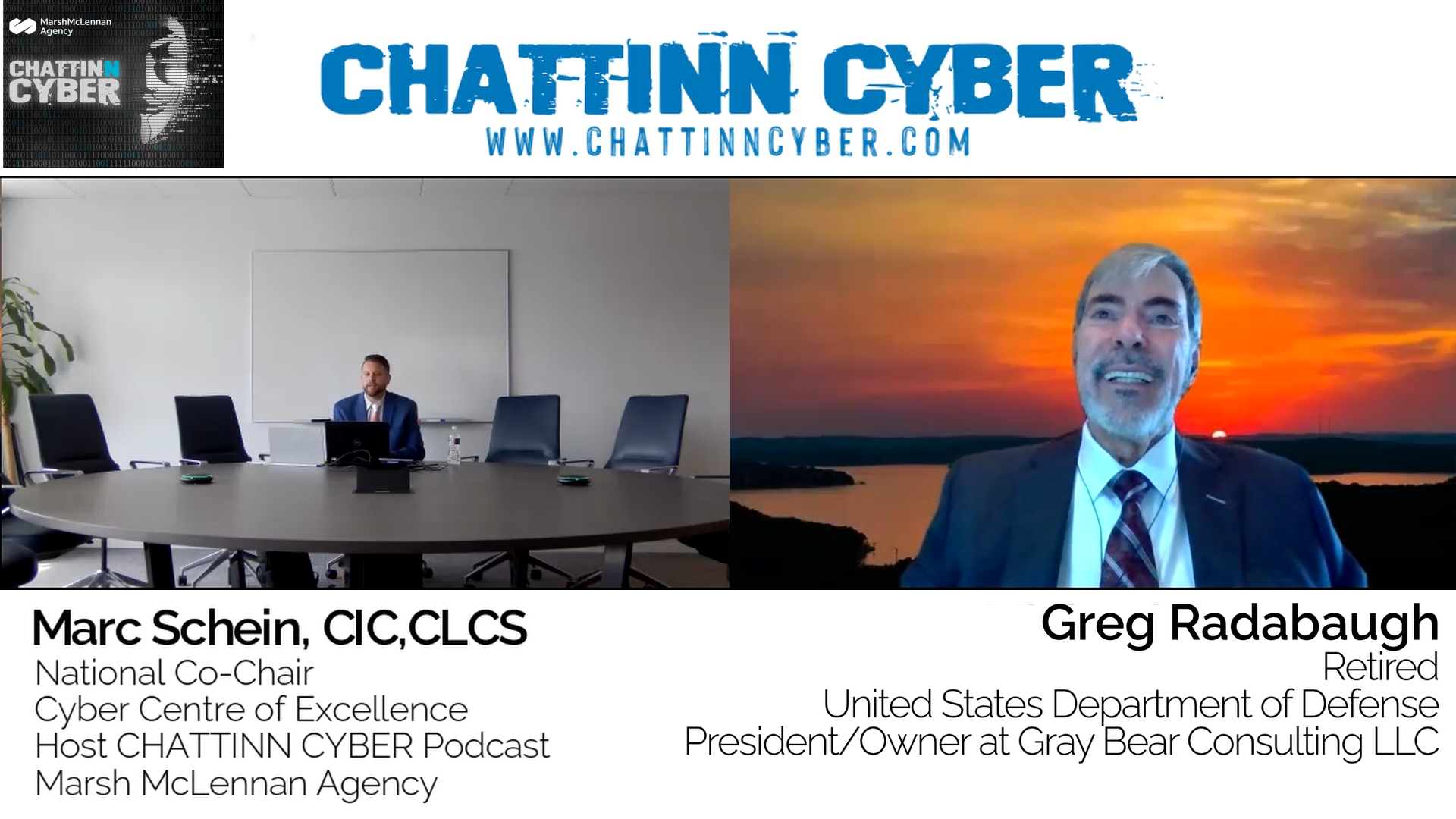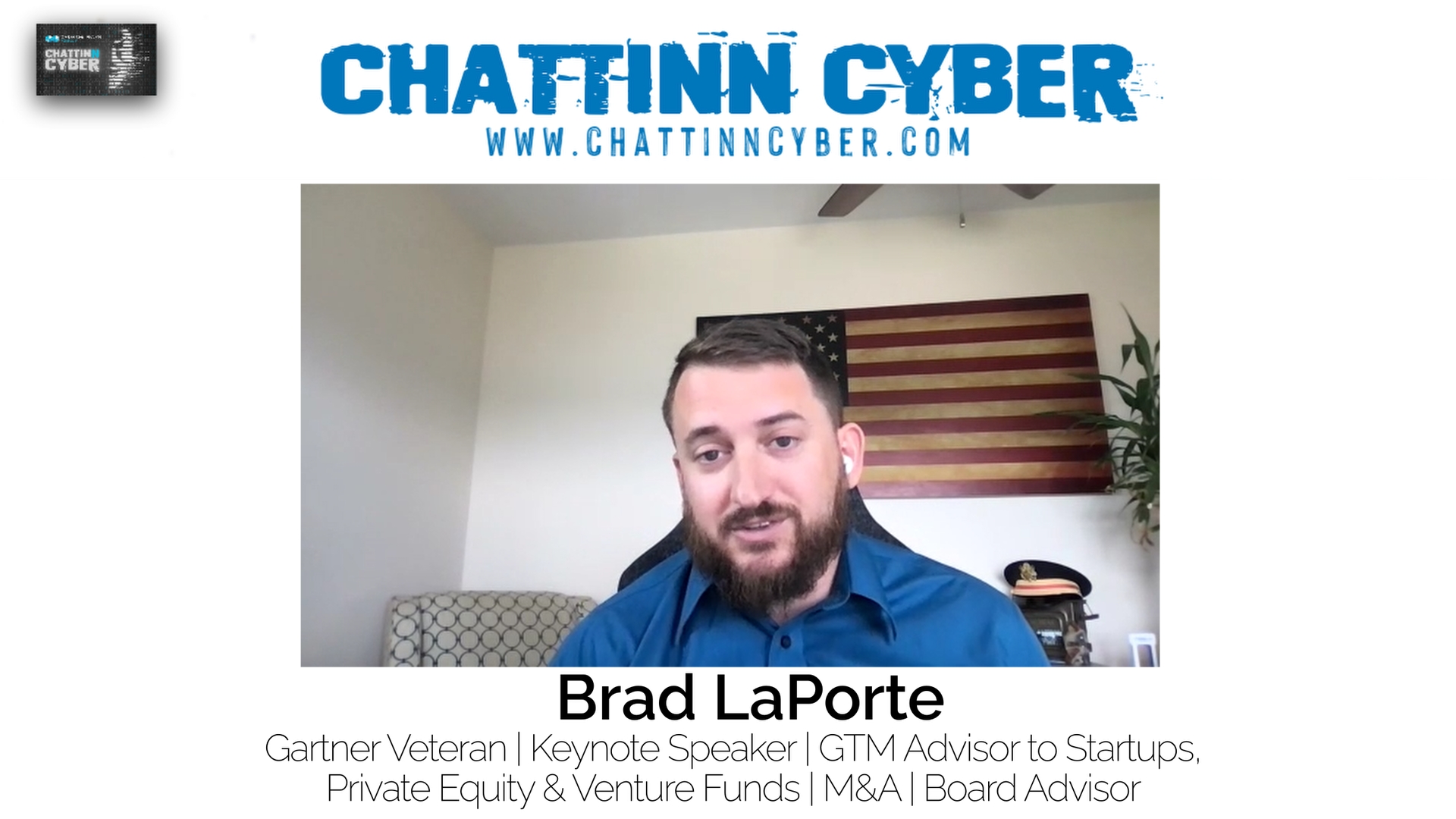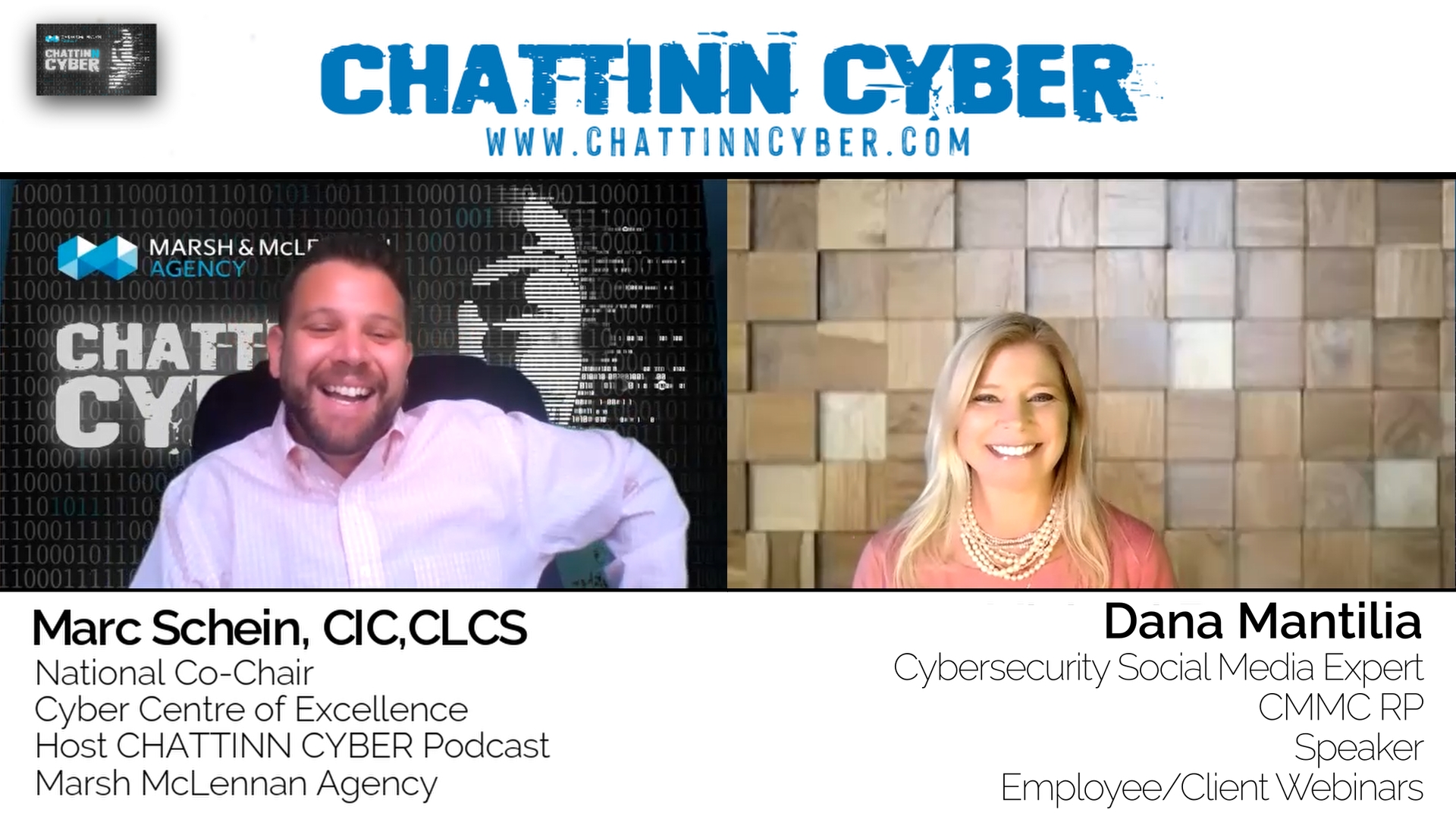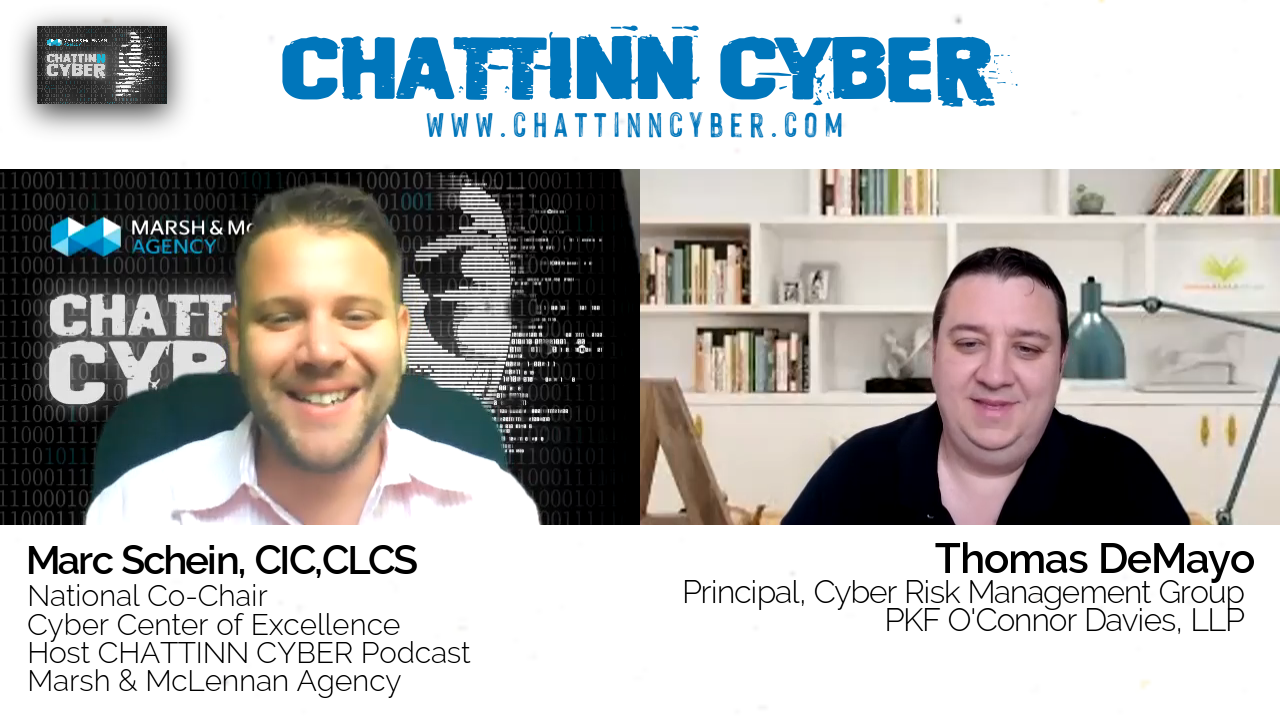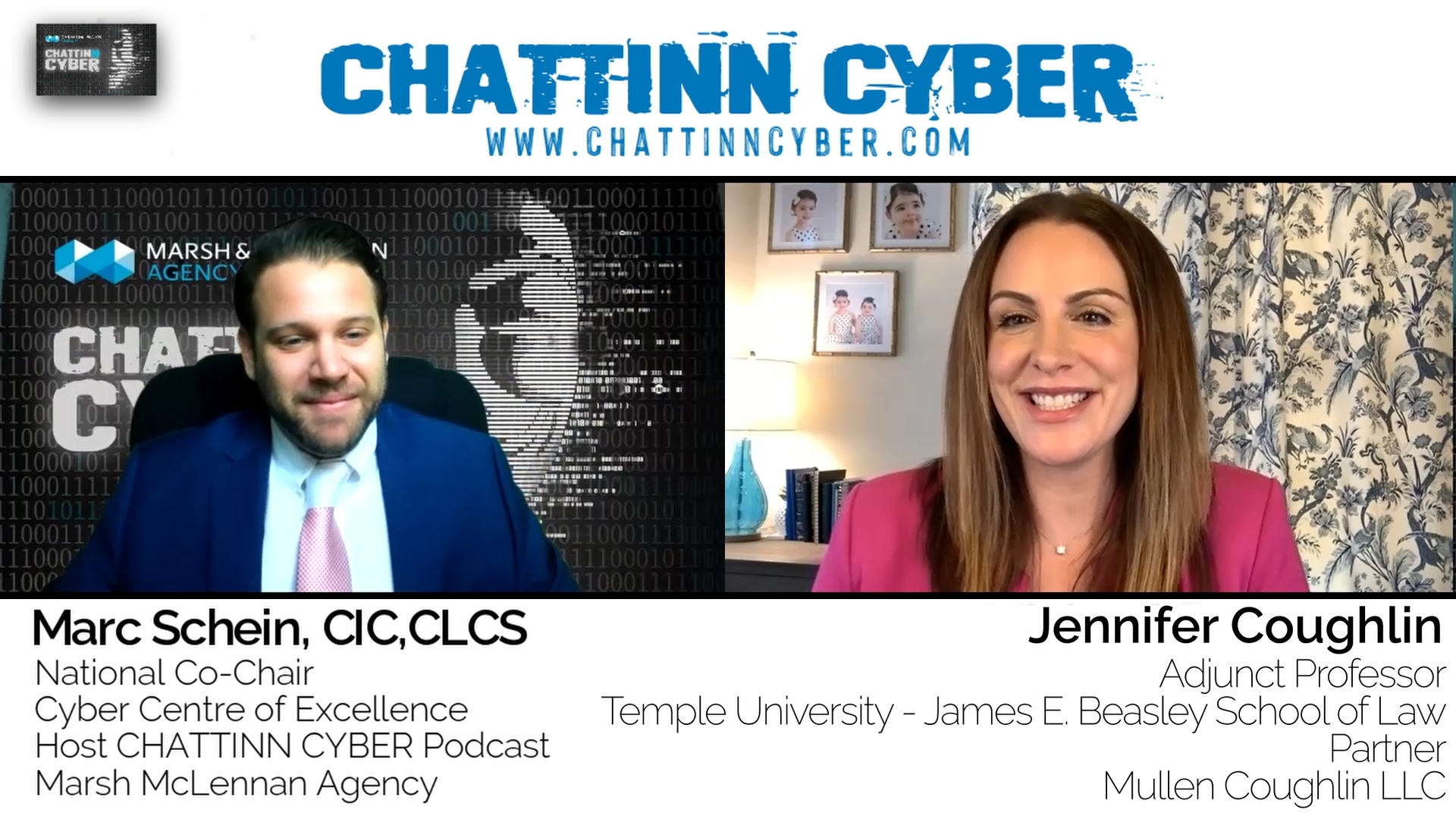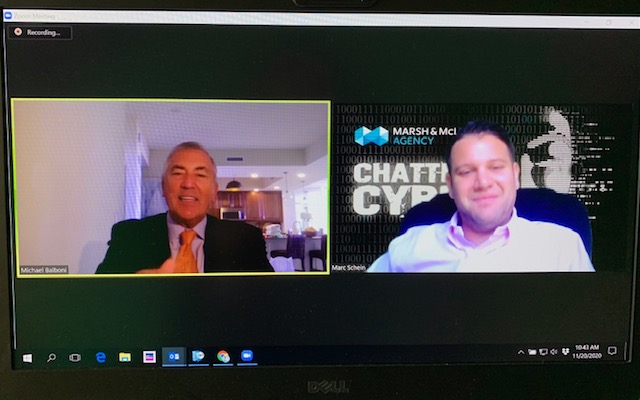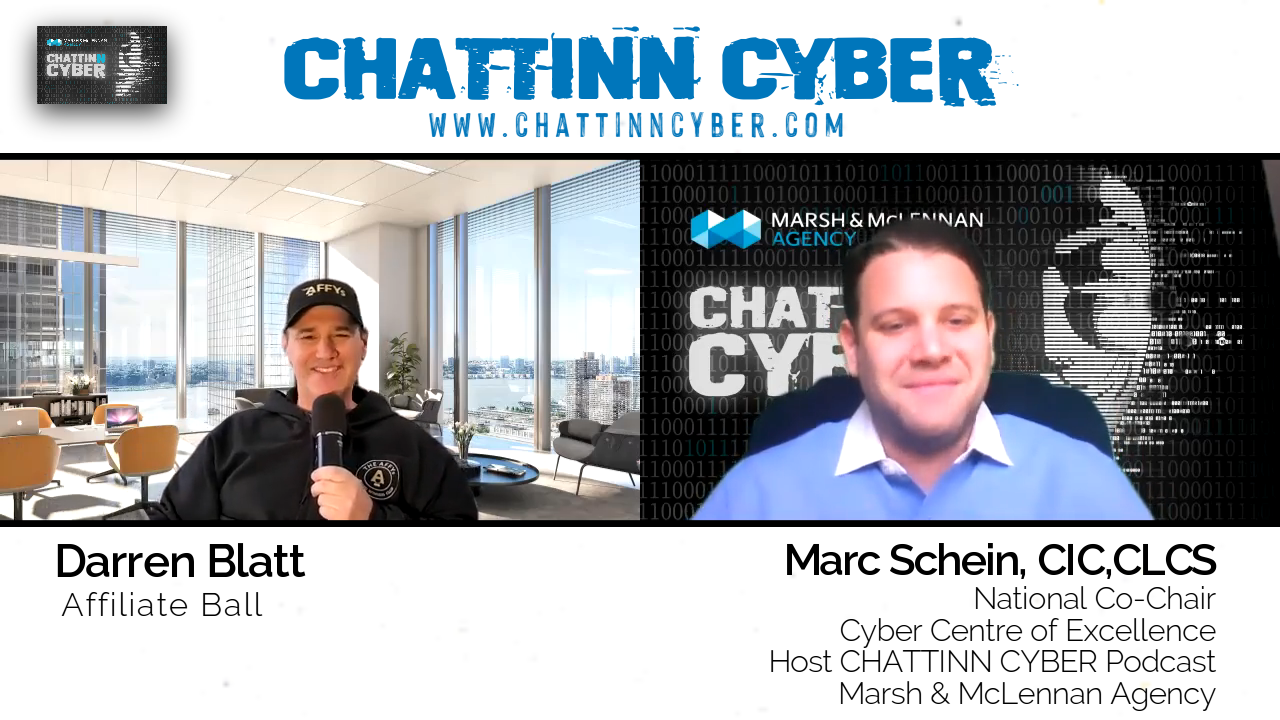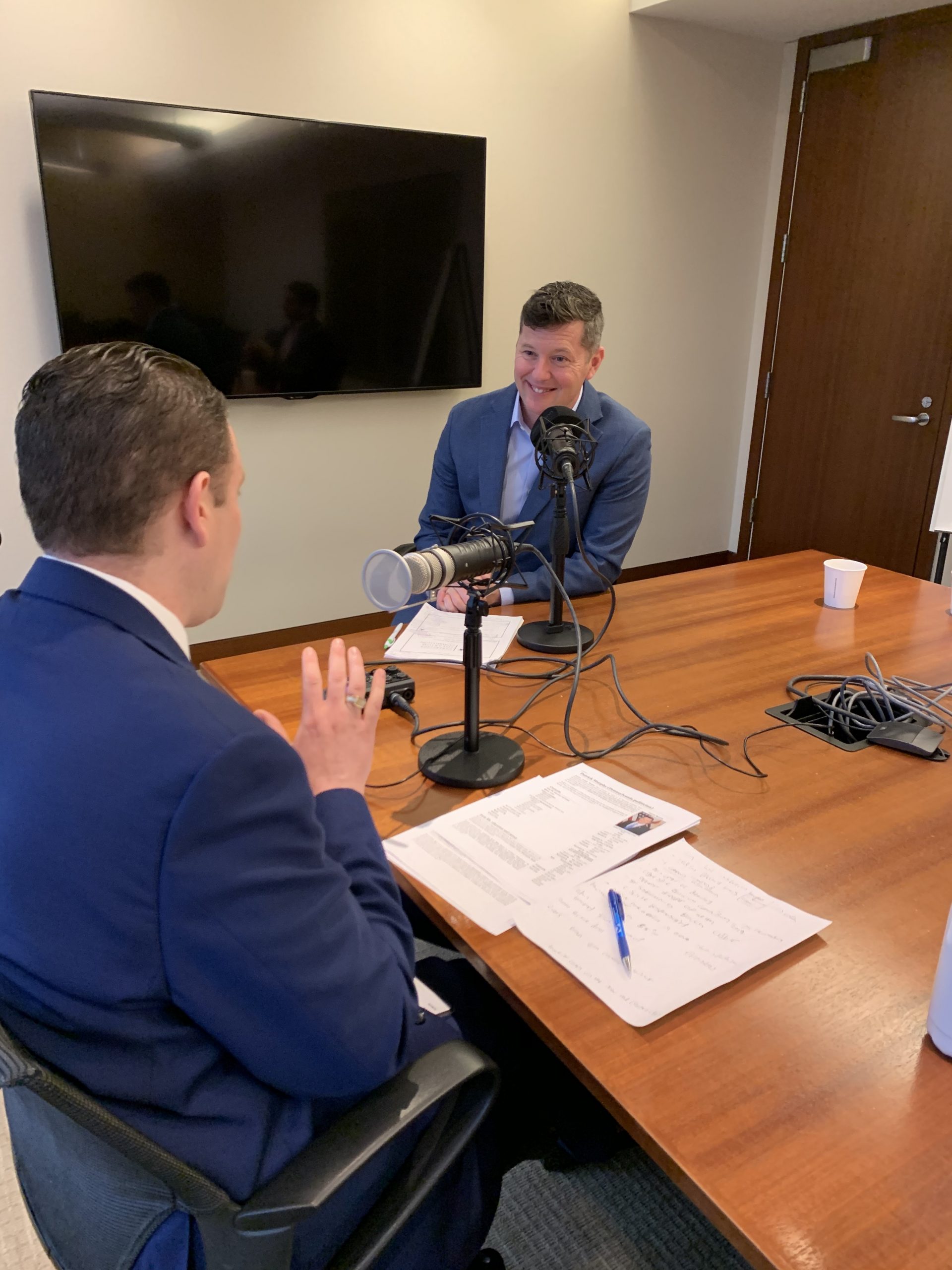Podcast: Play in new window | Download (Duration: 18:39 — 25.6MB)
Subscribe: RSS
In this episode of CHATTINN CYBER, Marc Schein interviews Marcin Weryk, Head of Business Development at Coalition Inc. The duo get into underwriting, cyber risks, and the future of cybersecurity, among other discussions on business and the changing world.
Marcin began by providing background on his upbringing, sharing that he was born in Poland and raised in Brooklyn. He also mentioned his journey to becoming a renowned cyber underwriter after graduating from St. John’s University with a major in finance and later participating in a training program at CNA to gain knowledge in the insurance industry. The training program ultimately led to his placement on CNA’s cyber tech NPL team and his entry into the field of cyber insurance.
Marcin stresses the importance of having a strong underwriter in the team who’s knowledgeable in both analytics and marketing. The key for underwriters is to not only be creative and thorough but also reliable and trustworthy. It is also critical to learn to interpret and analyze data in cybersecurity.
Further in the conversation, Marcin mentions Coalition and introduces it as the most innovative insurance company for reasons including its careful and correct analyses of data and the risk selection and prevention mindset of its employees. At its core, Coalition is a technology company that uses data more effectively than other insurance companies.
Marcin also shares two concerns businesses will face in the coming years. One is the need to improve the quality of data collection and utilization to reduce cyber risks. The second was about the data currently being used to underwrite better from a loss perspective, which leads to many issues. Business controls are essential in underwriting and risk mitigation.
He wraps up the conversation by highlighting the future of cyber issues, focusing on two of the most pressing issues: the exposure of systemic failure and privacy concerns.
Listen to the conversation for more details!
Highlights:
“I think what’s different about Coalition is the ability to understand that learning from data is important. And learning from data is even more important in the ever-changing space of cybersecurity. I think we at Coalition differentiate in that we are continuously making sure we look at risk selection and risk prevention. From a forward-looking perspective, not a backward-looking perspective.”
“And I think that’s the big differentiation is, most people are stuck looking backward, Coalition is good at looking forward. And I think that is what drives our value. The other part that’s been imperative to the growth and success of Coalition and others in this space that is leaning on data better, is the concept of continuous monitoring.”
“One is the systemic failure exposure that we’re all dealing with. I personally think that the marketplace will evolve into a space where there will be standard coverage, and yet also separate catastrophe cyber coverage. I don’t think that that’s that far in the future. Just for clarity purposes, I think many people will be interested in that type of cover. The other one that some people have started to speak about, but I don’t think it’s getting as much attention as it should is privacy as a peril.”
Time-Stamps:
[01:08] – How did Marcin become a cyber underwriter and how did he get involved in cyber?
[02:53] – Important roles of an underwriter
[04:43] – What is so unique about Coalition and how they are the most creative insurance company?
[07:42] – What made Marcin go to the technology from phenomenal insurance carriers?
[10:33] – Challenges and cyber risks businesses are going to face in the next two years that concerns underwriters
[13:52] – How important are controls for a business?
[16:10] – Some of the future issues we may be facing
Connect with Marcin:
LinkedIn: https://www.linkedin.com/in/marcin-weryk-828a1a6/
